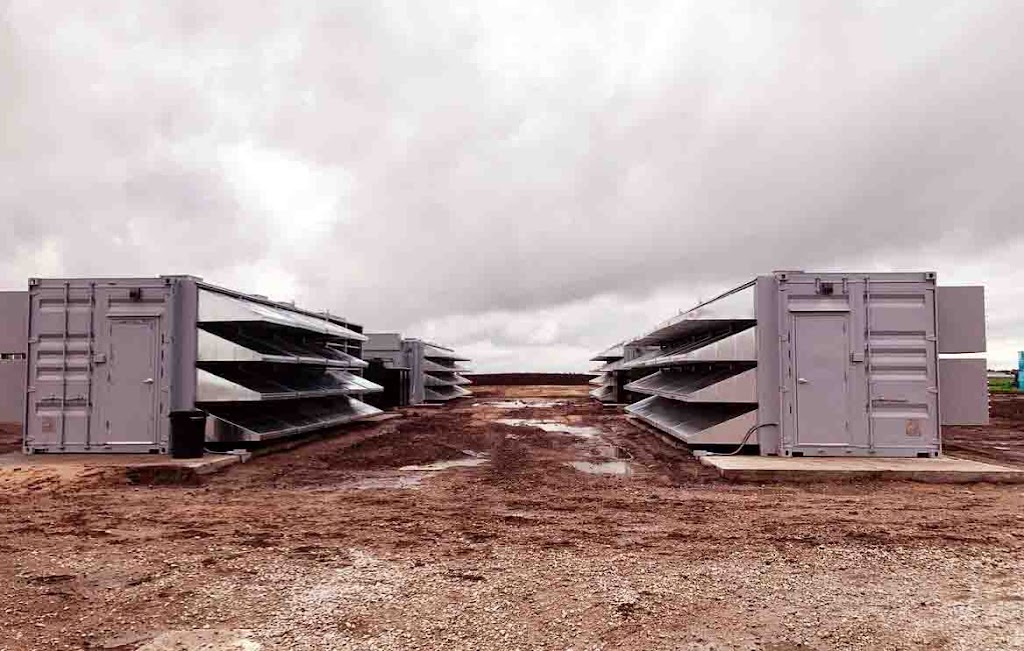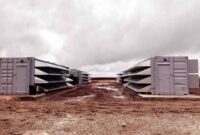What Is Bitcoin Mining? What It Is and What It
Takes to Make It Work
Bitcoin mining is booming in North America, creating new
revenue streams for businesses with access to inexpensive power, particularly
renewables. Learn about the risks as well as the benefits.
Despite the cryptocurrency’s unpredictable pricing and
growing environmental concerns, North American Bitcoin mining is booming.
Texas, in particular, has emerged as a hotspot since China banned the business
in 2021, causing a mass migration of miners from the country. The ban, which
reportedly reduced China’s control of Bitcoin mining from roughly two-thirds in
April 2021 to zero in July 2021, has created a new opportunity for North
American companies, particularly those in the energy sector, to become more
familiar with Bitcoin mining and incorporate it into their business models.
For those unfamiliar with Bitcoin’s inner workings,
“mining” is the process through which transactions on a blockchain
are validated. It’s effectively a cryptographic race to add blocks, or records,
to the cryptocurrency’s ever-growing blockchain network. Winning miners are
compensated in Bitcoin (BTC), which hit a record price of more than $68,000 in
November 2023.
Following the Chinese ban, North American companies such as
Riot Blockchain and Marathon Digital Holdings are raising record amounts of
capital to ramp up production and expand their industrial-scale operations.
Simultaneously, Chinese companies have joined what has been dubbed the
“Great Mining Migration to North America,” investing in US facilities
and constructing their own massive warehouses outfitted with thousands of small
computers designed specifically to mine a variety of cryptocurrencies, the mostpopular of which is Bitcoin.
What I’ve found from completing feasibility studies for
Canadian clients interested in this brisk industry is that new entrants,
particularly energy companies, are making significant inroads into the sector
through joint ventures and other collaborations. One of the most important
considerations in bitcoin mining is the cost of power. This means that enterprises
having access to consistent, low-cost electricity, particularly from renewable
sources, have a potential to play a key role in the evolution of the sector in
North America.
In this essay, I will explain the principles of Bitcoin
mining and demonstrate how to compute the costs and returns, which can be
enormous. I also discuss industrial challenges, such as energy utilisation and
risks, such as the ever-changing crypto regulatory environment.
Bitcoin is exploding.
Since its inception in 2009, Bitcoin has inspired dozens of
cryptocurrencies, but in terms of value, it still stands alone. Despite the
volatility of its price, its monetary policy provides some stability by
limiting mining to 21 million Bitcoins over a certain period of time. Although
there are nearly 19 million in circulation now, the mining reward is
periodically cut in half, so it will take until 2140 to exhaust Bitcoin
production.
While other crypto networks manage supply as well, none have
been able to match Bitcoin’s popularity. Bitcoin futures and exchange-traded
funds were the first to be offered in regulated US and European markets as
investors embraced the asset class. It quickly showed up on the balance
statements of companies such as Tesla and Overstock. This demand contributed to
Bitcoin’s market valuation surpassing $1 trillion in November 2021. In
comparison, Ethereum, the second most popular cryptocurrency, reached only
around half that value.
Bitcoin is also notable for the industrial-scale crypto
mining enterprises, or farms, that it has generated. The most advanced crypto
facilities employ solely or exclusively Bitcoin, such as the Genesis Mining
farm, which consumes more electricity than any other enterprise in Iceland.
Riot Blockchain’s Texas facility is one of the largest in North America,
occupying three massive warehouses on 100 acres of land and housing 60,000
Bitcoin-only mining computers.
The Fundamentals of Bitcoin Mining
A blockchain, which is effectively an electronic ledger that
maintains a continuously expanding list of information, is at the heart of
every cryptocurrency. The blocks in the chain are essentially files in which
data such as Bitcoin transactions, as well as which miner successfully created
that particular block, are stored. Each block also has a hash, which is a
unique 64-digit hexadecimal value that identifies it and its contents, as well
as the previous block’s hash. To win a block in most cryptocurrencies,
including Bitcoin, a miner must be the first to guess a hash value equal to or
lower than the one generated by Bitcoin for the transaction. As more miners
compete and more computer power is deployed, each miner’s chance of coming in
first is reduced—the current odds are one in tens of trillions—helping to
maintain the present rate of forging new blocks of around one every 10 minutes.
This rivalry among miners also collectively secures the
blockchain by allowing transactions and data to move in a trustless way, which
means that no intermediary, like as a bank, is required to verify that a
Bitcoin cannot be spent twice. Instead, the difficulty of finding the right
hash and the financial reward for success create a secure consensus mechanism
by making malicious users’ hacking too expensive.
Bitcoin’s consensus technique is known as proof of work, or
PoW. This algorithm is particularly strong for maintaining a secure and
decentralized network because it ultimately relies on the aggregate power of
thousands of computers. It does, however, have downsides. Most importantly, it
is extremely energy-intensive. The amount of electricity necessary to earn
bitcoin and operate the network grows as more computer power is employed for
crypto mining.
Other cryptocurrencies, such as Ethereum, have switched or
plan to switch to a different algorithm known as proof of stake, or PoS. PoS
does not necessitate the same massive, decentralized network of miners to
support its operations and hence consumes significantly less energy. While it
is less secure, its lower energy requirements may make it easier and less
expensive for those blockchains to support a new generation of crypto
applications such as smart contracts, non-fungible tokens, and decentralized
finance. Bitcoin, on the other hand, has not declared any plans to switch to
PoS.
Finally, as part of Bitcoin’s supply management system, the
reward for mining a block will be cut in half in 2024, from 6.25 BTC per block
mined after the most recent halving in May 2020 to 3.125 BTC. Even in the face
of the projected dip, the current bullishness around mining says a lot about the
industry’s profitability and the belief that the original cryptocurrency will
continue to appreciate. It also reflects the fact that the hashrate, which
represents the total number of hash guesses computed in the network at any
given time, fell when Chinese operators were forced to close in 2021. This
opened up a lot of opportunities for new miners. The hashrate in December 2021
was around 175
Bitcoin Mining Dangers
Of course, no new venture is without danger. Because miners
are paid in Bitcoin, price volatility is a significant revenue risk. Operating
concerns include potential internet connectivity issues, overheated ASICs, and
system hacks—though, given the size and security of the Bitcoin network, the
hacking risk remains low.
The availability and dependability of electricity should be
prioritized. Because power is so important in this business model, miners must
carefully consider the redundancy of their supply. While Texas has emerged as
an industry center, there are significant concerns about the state’s power grid
that potential investors should consider.
As miners in China and other countries have discovered, the
regulatory environment is also a potential concern. Even previously friendly
countries, such as Kazakhstan and Iceland, have begun to limit new and current
mining activities in order to manage demand on their electricity systems. A
number of US state governments, like Texas’, have embraced Bitcoin mining, with
some even offering incentives to producers. However, the US federal government
is now paying closer attention to the industry, with new tax reporting
requirements set to begin in 2023 and the Federal Reserve increasing its
scrutiny of crypto’s risks to consumers, banks, and the overall financial
system.
Because crypto regulations in the United States and around
the world are still in flux, miners must remain vigilant and keep an eye out
for changes that could jeopardise their bottom lines.
The energy requirements of bitcoin mining raise another
issue: the environmental impact of mining, which poses both ethical and
reputational issues. The cryptocurrency business has received harsh criticism
for its carbon footprint. The total power consumed by Bitcoin annually is
equivalent to what Finland uses in one year, according to the New York Times.
Even the most efficient Bitcoin mining facility requires approximately 155,000
kWh to mine one Bitcoin. In comparison, the average US household uses
approximately 900 kWh per month.
Climate change is no longer a specialist problem. Reduced
carbon emissions are now essentially a global objective, according to a new
Deloitte report, and brands are responding. Tesla, a major Bitcoin investor,
said in May 2021 that it will cease Bitcoin purchases owing to environmental
concerns. Since then, the company has stated that it will restart taking
Bitcoin after it has confirmed that at least 50% of Bitcoin mining activities
use sustainable energy.
The crypto sector has also begun to respond. Many of the
larger producers have committed to switching to renewable energy, either
through direct purchases or through the purchase of carbon credits. Great
American Mining and Crusoe Energy have also created methods for mining farms to
use electricity that would otherwise be squandered, such as flaring natural gas
at oil fields, surplus solar or wind power that cannot be stored, or hydropower
generated by dam overflows. Of course, this technique is only effective if
crypto mining does not increase demand in the process.
Bitcoin Mining: A New Business Opportunity
While the economics of Bitcoin mining at scale are very
appealing, producers must be aware of their regulatory and environmental
context. Incorporating Bitcoin mining into existing operations to better manage
their own energy output gives a unique chance to utilise public opinion in
addition to excess resources for new entrants such as power corporations.
According to the University of Cambridge, roughly 40% of PoW
mining is already powered by renewable energy, but there is growing pressure to
considerably improve this ratio. Companies that provide environmentally
sensitive energy solutions can play a vital part in this while reaping major
benefits.












